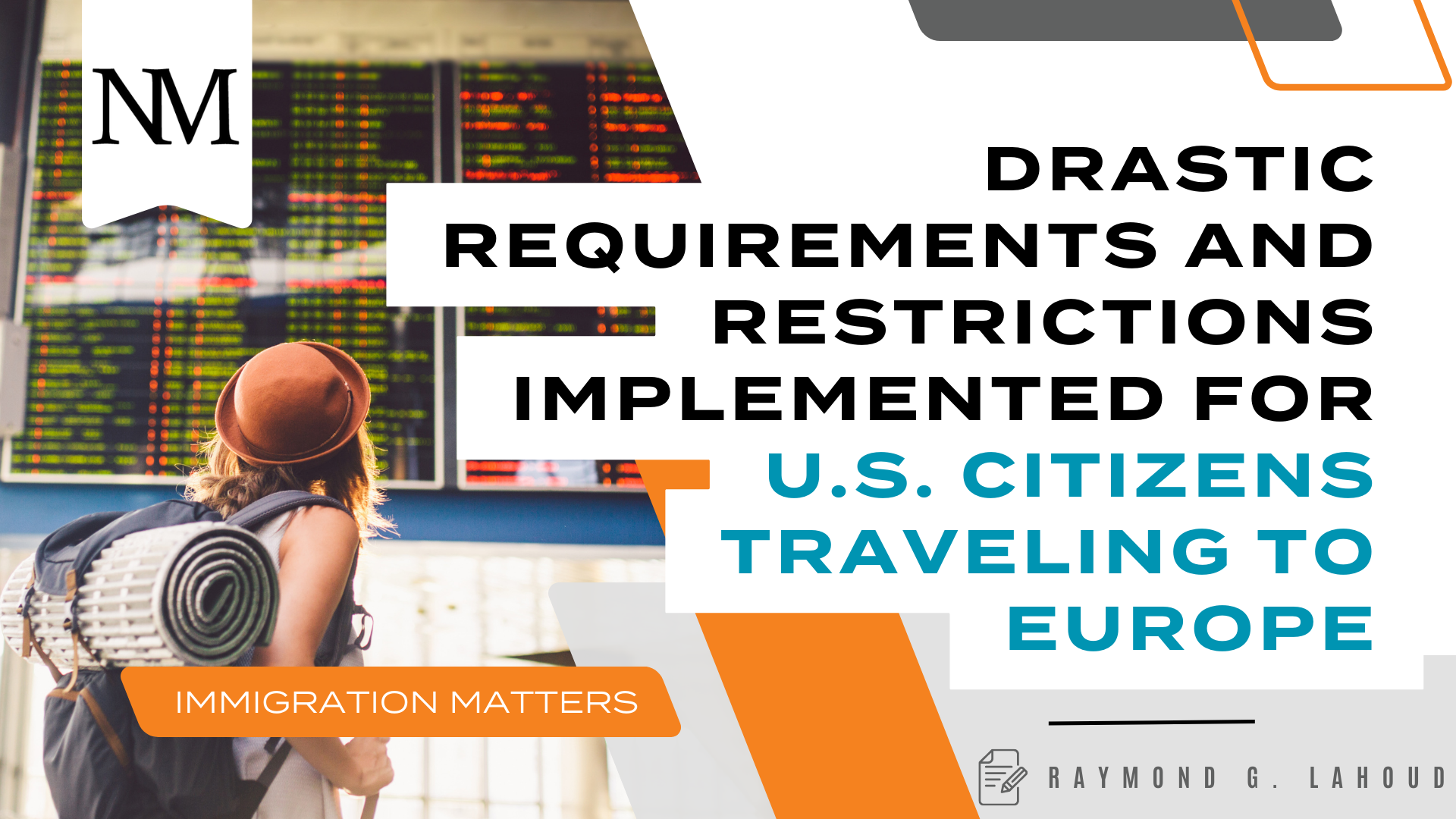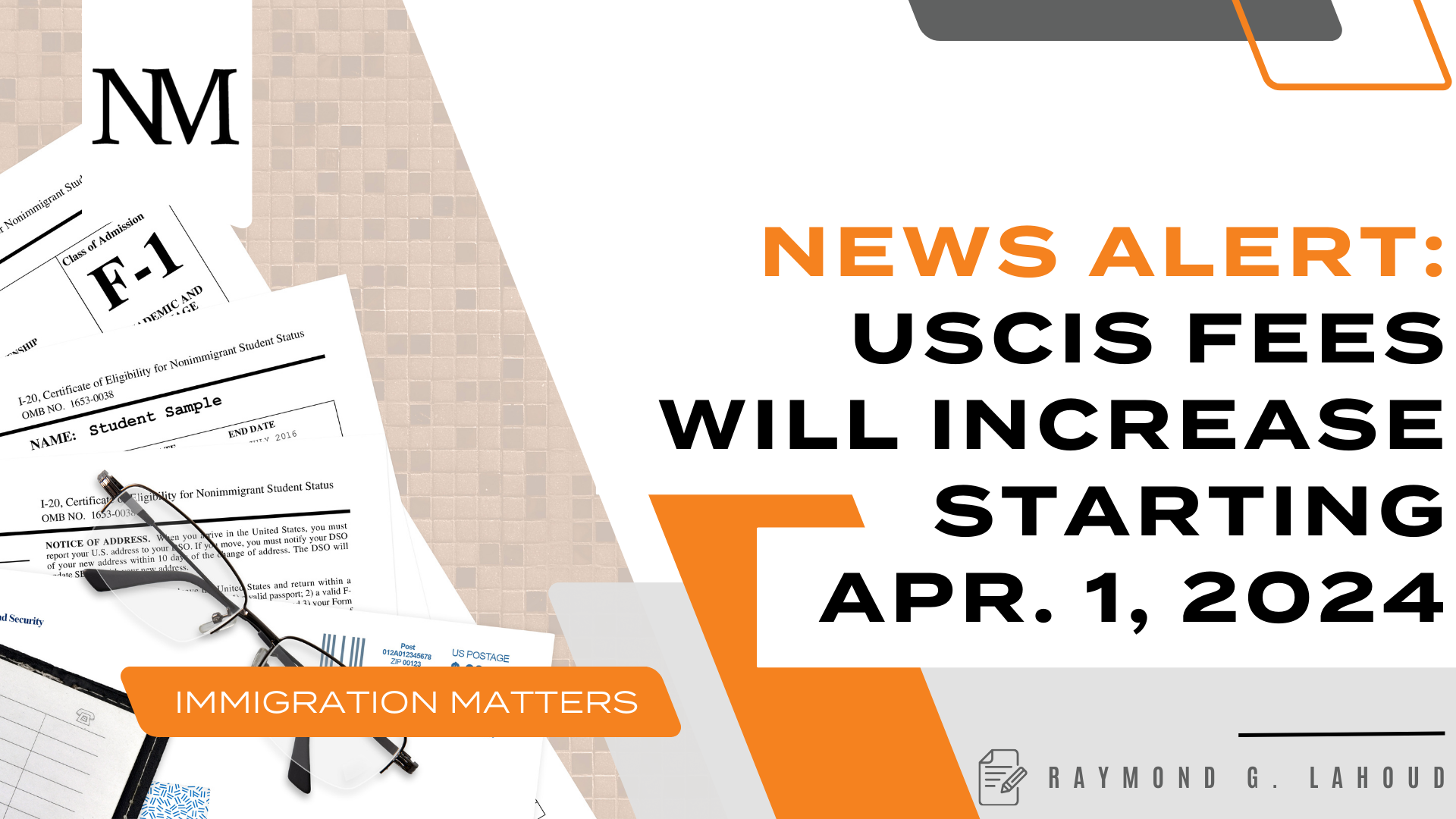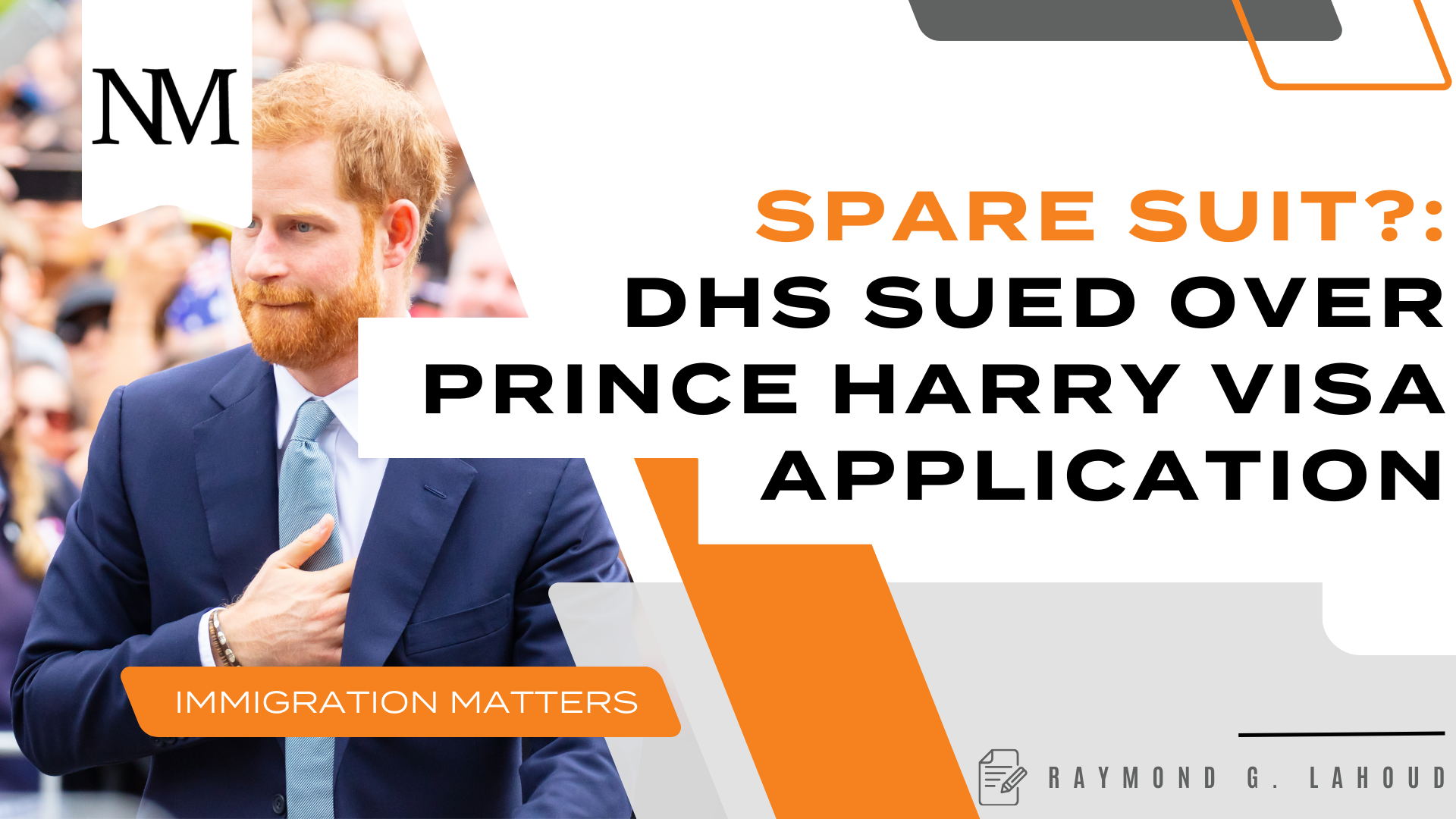Drastic Requirements and Restrictions Implemented for U.S. Citizens Traveling to Europe

For decades, United States citizens traveling to most European countries could just book a flight and hop on a plane. No visa, entry documents, or prior authorization were necessary. United States citizens would land in Europe and were permitted to enter without any questions from European immigration officials. The ease of entry was important to the growth of the European tourism industry and to further facilitate trade businesses in the United States with employees who had to travel to Europe (often, at the last minute) to negotiate contracts, settle disputes, close deals, and meet with their European counterparts. This easy travel to Europe, that was often taken for granted, will soon come to an end.
Starting in 2024, all United States citizens must obtain prior authorization when traveling to any European Union country. Further, when arriving in Europe, United States citizens will face increased scrutiny from European border officials.
How Does a United States Citizen Request Prior Authorization to Travel to Europe?
To secure authorization for travel to European Union or Schengen member countries, United States citizens must submit a detailed application through a newly developed electronic portal – the European Travel Information and Authorization System (ETIAS). ETIAS will then conduct an extensive background check, maintain a database of all United States citizens authorization through ETIAS. Further, if ETIAS grants a United States citizen permission to travel to Europe, the system will track travel patterns as well as dates of entry to and required departure from Europe.
ETIAS applicants between the ages of 17 and 70 will pay a fee of 7 Euros. Anyone under the age of 17 or over the age of 70 is exempt from paying the ETIAS fee.
What European Countries Will Require ETIAS Authorization of United States Citizens?
United States citizens traveling to the following countries will require preapproval through ETIAS: Austria, Belgium, Bulgaria, Croatia, Cyprus, Czechia, Denmark, Estonia, Finland, France, Germany, Greece, Hungary, Iceland, Italy, Latvia, Liechtenstein, Lithuania, Luxembourg, Malta, the Netherlands, Norway, Poland, Portugal, Romania, Slovakia, Slovenia, Spain, Sweden, and Switzerland. Further, United States citizens traveling to the European microstates of Monaco, San Marino, and Vatican City will require ETIAS authorization.
What Will European Border Officials Ask United States Citizens When Arriving in Europe?
When arriving in ETIAS designated European countries, United States citizens will be subject to increased scrutiny by European border and immigration officials. In addition to evidence of ETIAS authorization and a United States passport, the following records will be requested:
- Evidence establishing the reason for travel, such as hotel reservations, invitation letters, itineraries of business meetings or conferences attending, and (if traveling for medical reasons) medical records and proof of health insurance.
- Proof of financial ability to stay in Europe for the duration of the trip, such as bank statements, credit card accounts, available credit records, declaration of cash in hand, and proof of traveler's cheques. In addition, travelers may be asked to produce evidence of health insurance for the duration of their stay in Europe.
There is no set list of questions that European border officials will or are permitted to ask. United States citizens may be asked about a wide array of issues from the reason and duration of travel to questions about family members, criminal background, reasons for travel to other countries, financial background, prior travel to Europe, work history, membership in political groups, phone calls, and social media posts. The purpose of the questioning is to determine whether the United States citizen poses any threat, misrepresented any answers during the ETIAS process, has ever been arrested in any country for any reason, is traveling to Europe for the true intentions stated, and whether there have been any previous European immigration law violations.
The European border official has the final discretionary authority as to whether a United States citizen will be permitted to enter and need not provide any reason for the denial. If refused entry, the United States citizen will be detained until the next return flight to the United States is available.
How Long Can United States Citizens Stay in Europe if Granted an ETIAS?
If issued an ETIAS, United States citizens can remain in Europe for a maximum of 90-days within a 180-day period. The 180-day is a rolling period, in that, when traveling to Europe, United States citizens count backwards from the date of entry to the last 180 days prior to that specific trip. If the aggregate of presence in Europe over the prior 180-day period exceeds 90-days, then entry will be denied.
Moreover, since the ETIAS tracks travel within Europe as well as entry and required departure dates, immigration officials will commence deportation proceedings against the United States citizen if the stay in Europe exceeds 90-days and will be barred from reentry in the future. If denied entry, the United States citizen will be detained until the next return flight to the United States is available.
When traveling to Europe, it is critical that United States citizens are aware of the pre-travel authorization requirements, travel with the necessary evidence, and are well-prepared for the enhanced questioning and scrutiny of European border officials. Absent readiness, a long-awaited and planned family vacation, or a critical business trip may transpire into detention and deportation.
To ensure that your European travel plans are uninterrupted, feel free to contact me at rglahoud@norris-law.com to avoid any potential detention or deportation for non-compliance with the ETIAS screening process.




